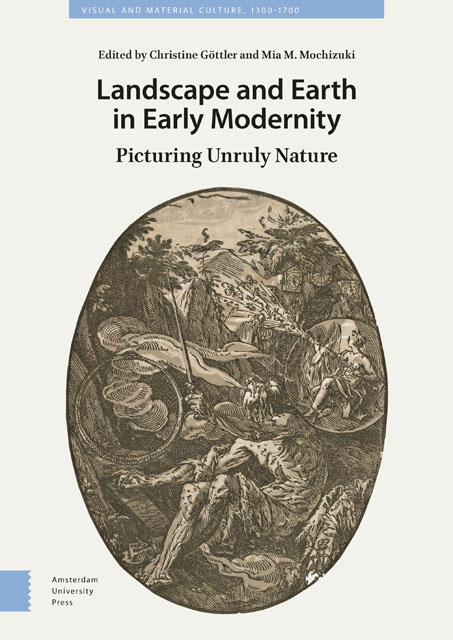10 - “In einem Augenblick”: Leveling Landscapes in Seventeenth-Century Disaster Flap Prints
Published online by Cambridge University Press: 20 June 2023
Summary
Abstract
News traveled quickly in the early modern era, and printed accounts of the most recent international disasters fueled this fascination. Book and print collectors could experience these incidents safely at home with novel, interactive broadsheets with liftable flaps. The most famous grouping showed the 1618 rockslide that completely destroyed the Graubunden mining district of Plurs, near Switzerland. Inspired by Zurich printer Johann Hardmeyer's 1618 publication, in 1619, Strasbourg and Nuremberg publishers Jacob van der Heyden and Johann Philipp Walch produced their own. Such tactile additions helped viewers literally grasp the extent of the wreckage while they perused the letterpress describing the newsworthy event. This article examines these unruly printed landscapes, their published afterlives, and their relationship to existing landscape modes.
Keywords: interactive prints; disaster; rockslide; broadsheets; Plurs
In the early modern era, news traveled fast, fake news traveled faster, and everyone desperately wanted to hear about the most recent deadly disasters. Book and print collectors relived these incidents safely in their own homes through interactive mapping of an unforgiving and unpredictable landscape that could change in the blink of an eye (“in einem Augenblick”). A group of prints with liftable flaps showing the rockslide that destroyed the Graubunden mining district of Plurs (or Piuro) on September 4, 1618 offered several distinct advantages over paintings and other prints of the disaster (Figs. 10.1–3, 10.8–12, 10.18). First was their speed. Quick to produce, and illustrated with hastily sketched etchings, they alternated even more swiftly between the landscape's normal state of being and its annihilation than a static or even a panoramic image. Reenacting the cataclysm itself, the flaps in the viewer's hands could instantly replicate the shock of the mountain's unexpected crash. Second was the physical interaction with the sheet. It required touching as well as looking and reading, creating a physical and visual correspondence as an empathetic response to the actual event. This materiality and physical closeness first made the viewer complicit, reinforcing the insinuations of biblical verses that permeated the printed record, and then made the viewer powerful (Figs. 10.2–3). For who but a god could swoop in from above, and with the touch of their fingers undo the devastation of an entire town? Who but a god could bring the hammer of their wrath crashing down when they lowered the flap once again?
- Type
- Chapter
- Information
- Landscape and Earth in Early ModernityPicturing Unruly Nature, pp. 353 - 392Publisher: Amsterdam University PressPrint publication year: 2022



